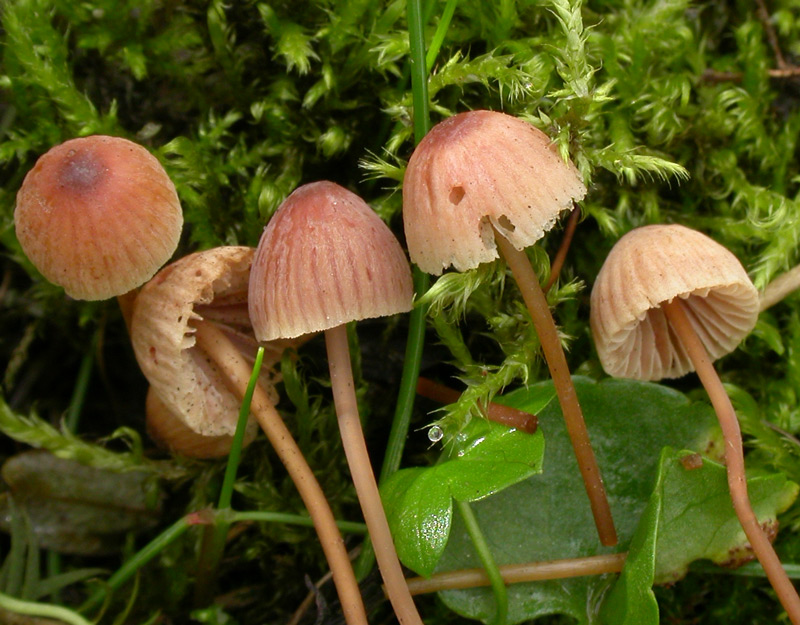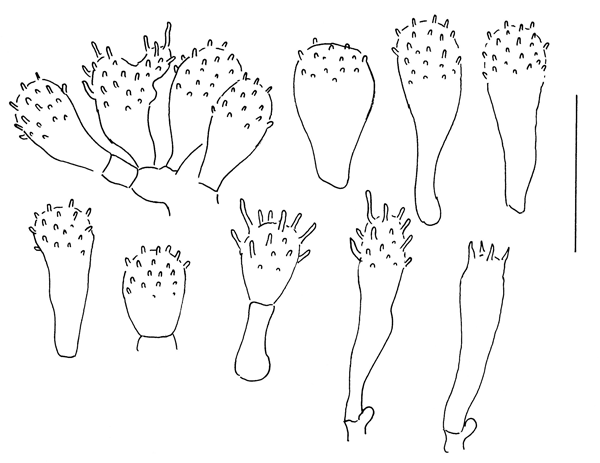Mycena alexandri
Mycena alexandri
Description
Cheilocystidia and basidium.
Cap 4-13 mm across, acutely conical in young stages, becoming broadly conical with age, sometimes with a small umbo or papilla, sulcate, translucent-striate or not striate, pruinose, glabrescent, fulvous, usually with a dark yellow-brown centre, somewhat paler at the margin, drying to yellowish brown; sometimes with a pink hue. Odour of iodoform when drying. Gills 13-16 reaching the stem, ascending, narrowly adnate, not decurrent with a tooth, yellowish to pale fulvous, sometimes with a pink tinge. Stem 25- 65 x 0.5-1 mm, somewhat firm, hollow, terete, equal, straight to somewhat flexuous, pruinose, glabrescent, fulvous to brownish, often fairly dark, the base densely covered with long, coarse, flexuous, whitish fibrils. Basidia 22-30 x 5.5-7.5 µm, slenderly clavate, 4-spored, with sterigmata up to 5 µm long. Spores 7.5-12 x 4.3-5.5 µm, pip-shaped to broadly pip-shaped, Q = 1.6-2.5, Qav ˜ 2.0, smooth, amyloid. Cheilocystidia 14-32 x 6-14 µm, forming a sterile band, clavate, covered with more or less evenly spaced warts and cylindrical excrescences up to 5 x 0.5 µm. Pleurocystidia absent. Lamellar trama dextrinoid. Hyphae of the pileipellis 1-5 µm wide, covered with warts and simple to branched, straight to curved cylindrical excrescences, tending to become somewhat gelatinized, and eventually forming dense masses. Hyphae of the cortical layer of the stem 1.5-4 µm wide, not gelatinized, covered with warts or straight to somewhat curved cylindrical to conical excrescences 2-5 x 1 µm, terminal cells cylindrical to clavate, diverticulate. Clamps present in all tissues.
Ecology and distribution
Growing singly or in groups on small twigs and other terrestrial plant debris, often apparently growing on the ground, under Salix lapponum, and probably under other Salix species in alpine areas. Late summer to autumn. Rare.

